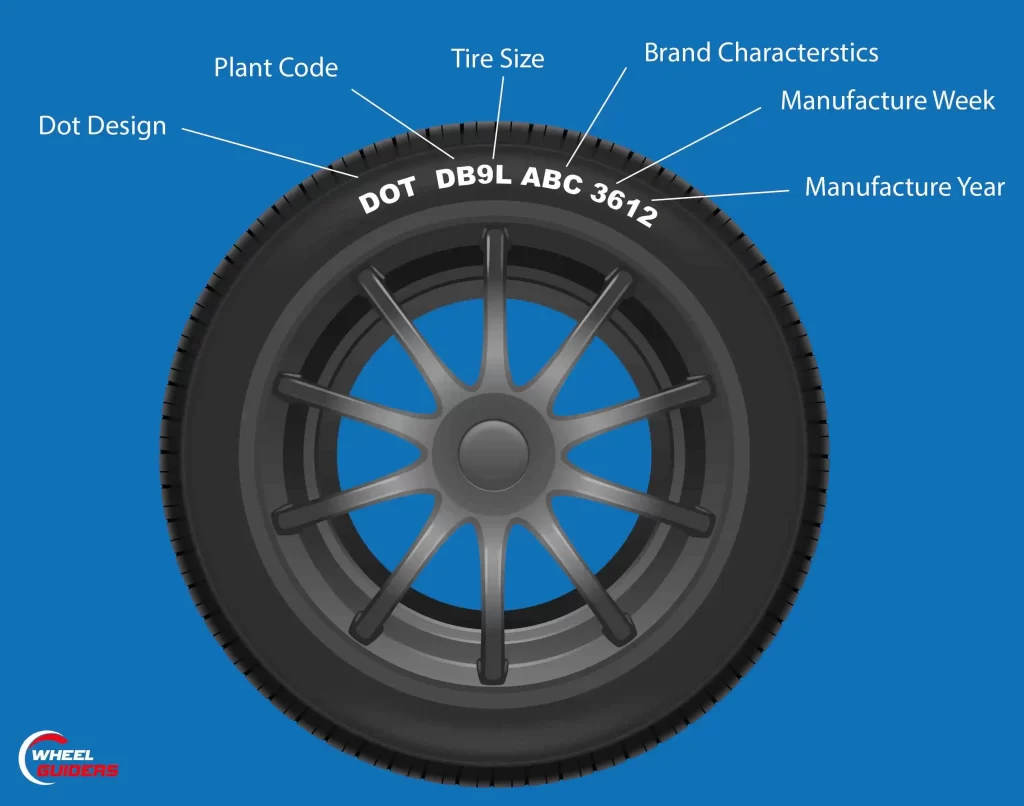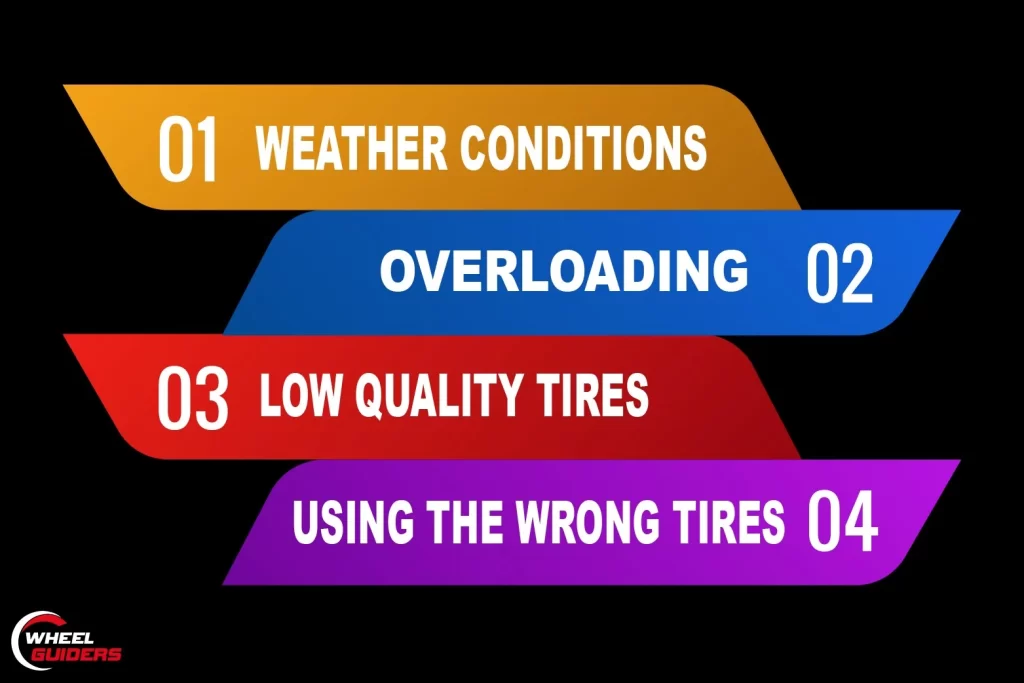When to Change RV Tires: A Comprehensive Guide
Nothing beats the freedom and adventure that an RV offers. But with great freedom comes great responsibility, and one crucial aspect of owning an RV is knowing when to replace the tires. By staying aware of the symptoms, you can avoid unexpected tire blowouts, prevent accidents, and have a stress free journey.
When To Change RV Tires ? RV tires should generally be replaced every 8,000 to 10,000 miles. However if they are used very frequently, you may need to replace them earlier to avoid blowouts and other hazardous conditions.
With the appropriate maintenance, you can increase their lifespan. To help you unwind and enjoy the experiences that lie ahead, we will address all of your queries regarding replacing RV tires.
How Long Do RV Tires Last
RV tires usually last for three to six years, although if you have taken good care of them and avoided hazardous driving situations, they can last up to 10 years.. Consulting a tire mechanic before reaching conclusions is highly recommended.
When you buy a used RV or camper, it is recommended to check the owner’s handbook or documentation to determine how many miles are on the tire. This method is the most practical and preferred one which can give you a better idea of the wear and tear on the tires and help making a prompt decision.
How To Find Out How Old My Are My RV Tires?

First and foremost, find the DOT tag on the tire’s sidewall. These numbers might appear to be nothing at first glance, but they are the key to discovering the actual age of your tire.
You can quickly determine the age of your RV tires by the code date. Each is followed by the term “DOT” and a series of digits. The code’s final four numbers indicate the production week and year. You may need to crawl under the RV to see the code because certain tires may have it inside.
The last four digits correspond to your RV tires production week and year. If the last four digits are “3612,” for instance, then it means that the tire was manufactured in the 36th week of 2012.
If the last four digits comprise three numbers and one alphabet. For example 492Q, then it indicates that the tire was manufactured in the 49th week of the year in the decade of 2010. The decade of 2010 is denoted by the letter Q, and the last two digits ’92’ indicate the manufacture year of the tire
How Often Should RV Tires Be Replaced?
Rv tires should be replaced every 8,000–10,000 miles. If the tires are in good shape and have tread density, they can be extended more under the supervision of a tire expert. In some cases, tires wear out before specific years or miles have passed, so waiting for the recommended miles or years is inadequate and risky.
It is recommended to check the tires frequently. Visual inspection reveals the proper life of the tire. Periodically checking your tire’s condition with a professional can help you determine its exact condition and life.
Factors That Can Decrease The Life Of Your RV Tires
Some people practically live in their travel trailer, while others use it for rare road trips and vacations. This variation in usage frequency impacts tire life. The camper’s tires will lose their tread a year sooner if you use them daily than if you use them once or twice a month.

Weather Conditions
weather conditions impact the condition of a vehicle’s tires, engine, and other components. For instance, driving in International Falls, Minnesota (officially Known as the “icebox of the Country”) is nothing like running a RV in San Francisco’s sunny, temperature Bay Area.
Extreme heat and cold contribute to a considerably faster rate of sidewall and outer rubber component wear on tires.
Overloading
Overloading the RV is another factor in tire failure. Each RV comes with a load capacity limit. If you overload it over the advised weight limit, it might unbalance the tires and effect the engine negatively.
Low Quality Tires
Sometimes, inferior quality will only last a while. Hence, if you replace the trailer’s original tires with less expansive, lower-quality options, you might have to sacrifice comfort and stability.
Using The Wrong Tires
As motorhome owner, you need to use specific trailer tires known as ST tires, as they are designed to support more weight which non ST tires cannot support. They are designed to withstand the weight and load distribution of RVs and provide improved durability and stability while driving.
We should take care of RV tires to prolong their life. Maintain proper tire inflation, inspect your tires frequently, keep them dry and cool, and replace them when they get too old. Check them before every trip to ensure they are in good condition and properly inflated. By keeping these steps in mind, you can help ensure safety and extend the life of your RV tires.
How To Change RV Tire The Correct Way?
Time needed: 15 minutes
Even though it may seem complicated, changing an RV tire is manageable with the right equipment and some fundamental knowledge. To change an RV tire, follow these steps
- Park And Gather Tools
Park the RV on a level surface and engage the emergency brake. Gather the required tools like jack, lug wrench, spare tire and tire chocks.
- Placing The Jack
Put the jack at the designated jack point or beneath the trailer’s frame. Place a flat piece of plywood under the jack to provide stability.
- Loosen The Lug Nuts
Loosen the lug nuts on the wheel before lifting the RV. While lifting the RV off the ground, only lift it enough that the lug nuts can be spinned manually.
- Remove The lug Nuts
Remove the lug nuts and pull off the flat tire from the wheel studs.
- Fixing The Spare Tire
Fix the spare tire onto the wheel studs and hand tighten the lug nuts.
- Tighten The Lug Nuts
Once the RV is on the ground, tighten the lug nuts properly with the help of lug wrench in a star pattern.
- Checking The Air Pressure
Check the air pressure in the spare tire and make sure to inflate them as per the recommended air pressure.
How Do You Maintain And Preserve RV Tires?
You must preserve and maintain RV tires for dependable and safe road travel. Here are the main five points for preserving and maintaining the condition of RV tires:
- Regularly Check Tire Pressure: It’s crucial to check the tire pressure at least every month and specifically before each journey because even brand new tires lose air over time. Under inflated tires may cause blowouts or more significant wear and tear, leading to poor fuel economy.
- Inspect The Tires For Wear And Damage: Pay attention to any indication of buckling, bugling, cuts, or punctures. We should replace tires with noticeable wear or damage right away.
- Store the RV Properly: Always Park the RV in the garage to prevent the tires from weather and sunlight deterioration.
- Drive Carefully: Avoid driving aggressively with abrupt stops and starts. This may result in unnecessary tire wear or strain and raise the possibility of blowouts.
- Use the Right Type of Tires: Choose tires appropriate for your RV. Select tires that can withstand your RV’s weight and driving conditions.

Where To Get RV Tires Installed
| Location | Pros | Cons |
| RV DEALERSHIPS (Knowledgable Staff) | Knowledgable Staff | More expensive |
| TIRE DEALERSHIPS | Wide Section Of Brands | May Not Have Specialised Equipment |
| BIG STORE ( WALLMART, COSTCO ) | Competitive Pricing | Limited selection of brand and sizes |
| MOBILE TIRE SERVICE | Specialised Equipment | Poor availability |
| ONLINE RETAILERS | Wide selection options | Extra Installation charges |
Conclusion – When To Change RV Tires
The average tire lifespan for an RV is five years. Less for a motorhome that travels a lot throughout the nation and more for a travel trailer that makes just two or three short trips away from home each year.
Your RV tires can last much longer if you take proper care of them by regularly checking the tire pressure and storing them appropriately. The total cost of ownership associated with routine RV tire replacement will also decrease.

